What is fibre broadband? Your full guide
15th February, 2021 | Home / Blog / Fibre broadband / What is fibre broadband? Your full guideReading time: 9 minutes

The new kid on the block when it comes to broadband technology – fibre broadband. Sure, you’ve probably heard of it by now, but are you confident you could separate your fibre from your copper connections? If not, fear not… you’ve come to the right place. Here’s fibre broadband explained.
- What is fibre optic broadband?
- How does fibre broadband work?
- FTTP vs FTTC
- Do I need fibre broadband?
- Why do I need fibre broadband?
- >What are the benefits of fibre broadband?
- How is fibre broadband installed?
- Do I need a telephone line with fibre?
- Can I get fibre optic in my area?
- How do I switch to fibre broadband?
- How fast is fibre internet?
- Is it worth getting fibre broadband?
- What is optical fibre broadband?
- What is involved in changing to fibre broadband?
What is fibre optic broadband?
Fibre optic broadband is the latest and greatest type of high-speed broadband. It’s also known as full fibre or FTTP.
Instead of relying on old copper telephone cables to provide a snail’s paced broadband connection, brand new fibre optic cables are used to achieve exceptionally greater speeds, with even greater potential in the future too!
So, the short answer: It’s a broadband game-changer!
Technical answer: It’s all about the capability of the cables.
Let’s unpack how fibre broadband works:
How does fibre broadband work?
Fibre optic cables are made up of lots of tiny reflective tubes inside. When you perform a task online, light bounces and pulses through the tubes to push your data through the network – so your data literally travels at the speed of light!
As the speed of your broadband service is determined by how quickly your data can travel through the connection, the quicker data can be sent, the faster your broadband connection will be.
It’s important to note there’s a limit on how quickly data can travel through copper wire connections, yet with fibre optic cable, the speeds and capabilities can be limitless.
Note: Wondering what we mean by data? Whenever you complete an action online like sending an email, streaming movies, online gaming or simply browsing the web – data needs to be sent across the network in order for you to do what you enjoy online. The faster your data can travel, the faster your speeds, and the faster you can do everything you love online. Simple!
FTTP vs FTTC
There are two different types of fibre broadband services: Fibre to the premises (FTTP) and fibre to the cabinet (FTTC).
Find out the difference between FTTC and FTTP.
FTTP is a full fibre broadband connection which uses fibre all the way, unlike fibre to the cabinet, which is a hybrid broadband connection using part fibre and part copper cable.
This may leave you wondering how does fibre optic broadband connect to my house?
With FTTP, pure fibre optic cables are installed all the way from the exchange into your home. The fibre cable will usually enter your property through the same point as your telephone line, which then connects to a modem to reach the signal.
Fibre to the cabinet on the other hand uses fibre optic cable ONLY to the cabinet, and then copper wire delivers the connection into your home or business. That means, the FTTC service still relies on the use of your telephone line to deliver the connection.
Compared to FTTP, you can only get a fraction of the speeds and service with FTTC, although it’s still a step in the right direction. At Airband, we offer FTTP broadband packages from 150Mbps and beyond, so there’s nothing to slow you down.
Do I need fibre broadband?
Yes because you could be getting far better speeds.
Do you know what speeds you’re currently getting? Use our broadband speed test to find out.
Why do I need fibre broadband?
You might need to switch to fibre broadband because it gives you such a faster, stronger connection than fixed wireless broadband can give you.
There’s a real sense of urgency for people to make the switch from copper to fibre, especially now that copper connections are estimated to be phased out entirely by internet service providers by 2026. It doesn’t stop there though, discover the key perks of fibre broadband below:
What are the benefits of fibre broadband?
-
- Faster connection speeds
- Crystal clear video calling
- Speedier streaming
- Less interference
- Greater reliability
- Futureproofed technology
- Stronger signal strength over larger distances
- Higher frequency rate
- No telephone line required
- Greater capability in future
How is fibre broadband installed?
Here’s our step-by-step guide showing how our engineers prepare fibre for install:
Step 1: Prepare the cable
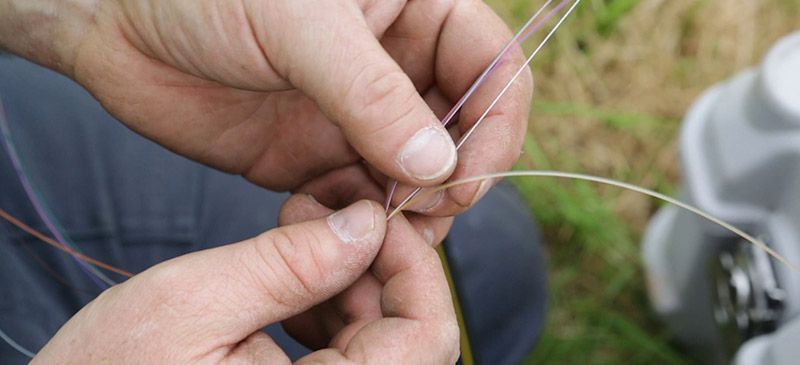
An engineer will prepare an ultra-lightweight fibre cable by splicing it ready for it to go into a fibre optic network. There are three elements inside an ultra-lightweight fibre cable, each with 12 fibres.
Here, our engineer is finding the correct fibres to fuse together – to make sure that the fibre optic light is travelling down the right fibre.
Step 2: Strip the cable
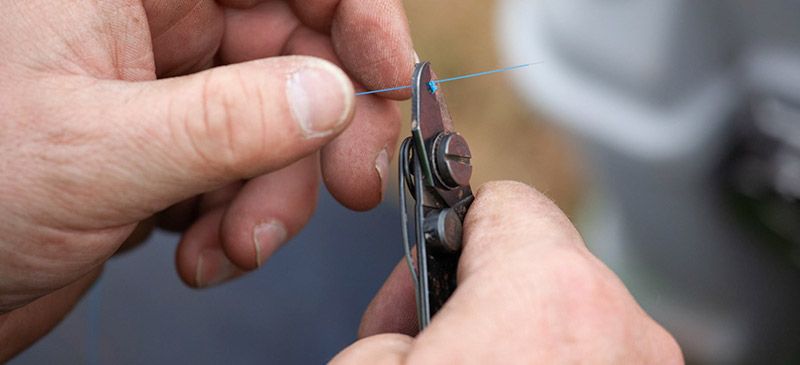
Our engineer is using a fibre stripping tool, known as ‘Millers’, (which is the brand name), to strip off the outer hard plastic layer and the see-through coating underneath. The outer coating is colour coded so you know which fibre it is.
Step 3: Clean the cable
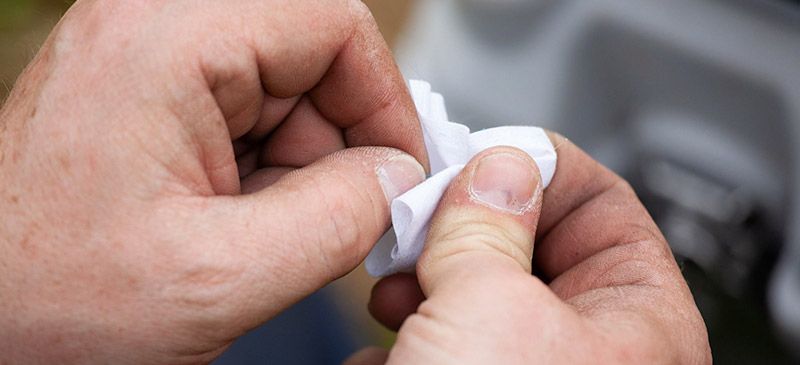
Fibre has to be sparkly clean, so our engineers will wipe down the exposed fibre with an alcohol wipe. It’s important to clean it properly because if you have dirty fibres it will affect the splice and the transmission of the fibre optic light.
Step 4: Cleave the cable
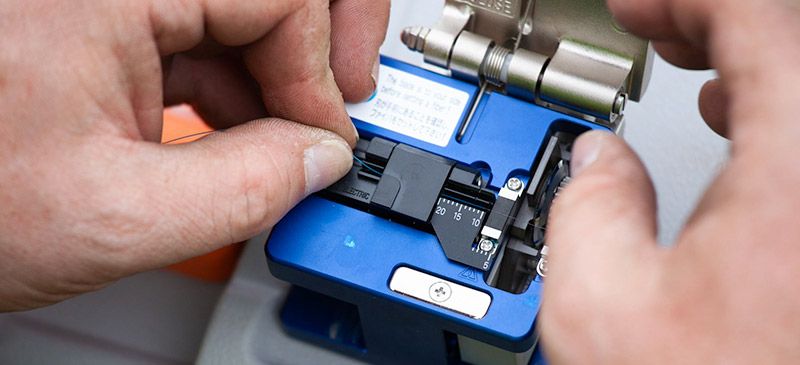
Now it’s ‘cleaving’ time. This is where a blade inside is ‘cleaving’ the fibre to the correct angle. If you don’t cleave to the right angle, you get a bad splice which affects the speed that fibre optic light can be transmitted.
When we’re building a fibre optic network, we’re creating a circuit and if you have a couple of dirty splices or cleave angles wrong it will affect the connectivity and the cable won’t transmit fibre optic light.
Step 5: Fuse the cable
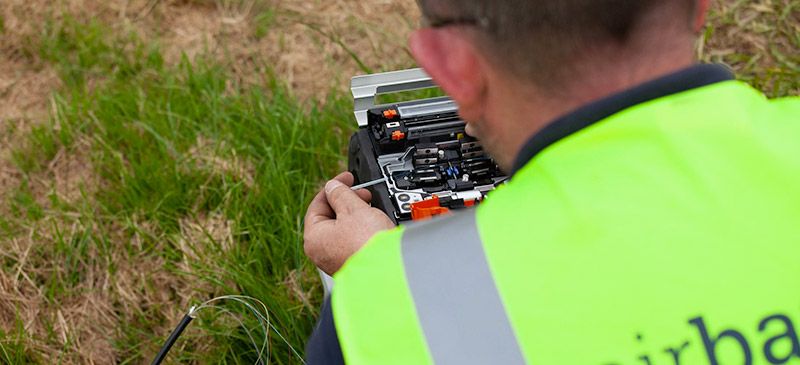
Here our engineer is lining up the fibre in the clamps in the fusion splicer – this holds it in position ready to be fused together.
There are two electrodes and when it’s lined up perfectly the fusion splicer heats up and fuses or ‘welds’ it together.
Step 6: Fibre is ready!
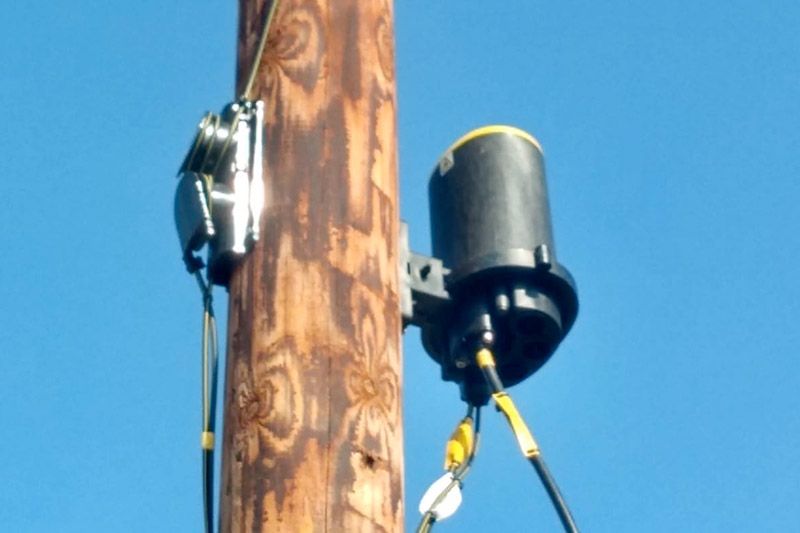
It’s good to go! The fibre optic cable is now capable of providing ultrafast connections to multiple premises. From here, the cable will run directly into your house to deliver your ultrafast internet connection.
Et Voilà. Our work is done!
Frequently asked fibre questions:
Do I need a telephone line with fibre?
No, you don’t need a telephone line with fibre. It’s up to you if you use it or lose it! Take a look at our Do I need a phone line blog for more info.
Can I get fibre optic in my area?
You might be able to get fibre optic in your area.
“Can I get fibre broadband?” is the first thing people want to know. As full fibre broadband is a relatively new introduction in the broadband world, it’s not yet widely available across the country, particularly in rural and hard-to-reach areas.
That’s why at Airband, we’ve made it our mission to provide better connectivity to communities left behind.
It’s easy to see if fibre is available for you. Simply pop your postcode into our broadband coverage checker and instantly find out if you’re in range for a fantastic fibre service.
How do I switch to fibre broadband?
Thinking about switching to fibre broadband? It’s a doddle! Check out our helpful guide on how to switch broadband providers.
Rest assured, we make it as hassle-free and cost-free as can be.
How fast is fibre internet?
Fibre broadband is faster than cable or ADSL. You’ll find plenty of options that offer broadband speeds of even up 35 or 60Mbps.
Is it worth getting fibre broadband?
Yes. It’s worth getting fibre broadband. If you’re spending much more time at home these days, and you’re working from home too, having a faster fibre connection is really handy.
Fibre broadband means faster upload speeds and a stronger connection. That means improved connectivity for calls and reliable speeds so you can send your important emails and files to your work colleagues.
What is optical fibre broadband?
Optical fibre broadband or fibre optic broadband are other ways of saying fibre broadband.
What is involved in changing to fibre broadband?
Checking your postcode in our broadband coverage checker to see if you’re in range is the first thing you need to do. You’ll either find that one of our engineers can get to you to set things up, that there’s a project going on in or around your area or you can register to suggest a new project.
The fibre broadband future
The rate in which we all surf online and rely on the internet to keep us connected, it comes as no surprise to see that copper doesn’t quite cut the mustard anymore. Step aside copper, the new tech’s in town. It’s time to make way for futureproof fibre connectivity with fibre broadband (FTTP).
Visit our broadband coverage checker to see if you can benefit from fast fibre broadband speeds available where you live now.
Related Articles
Check availability:


